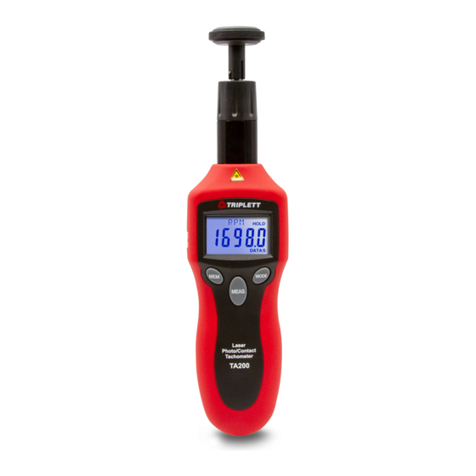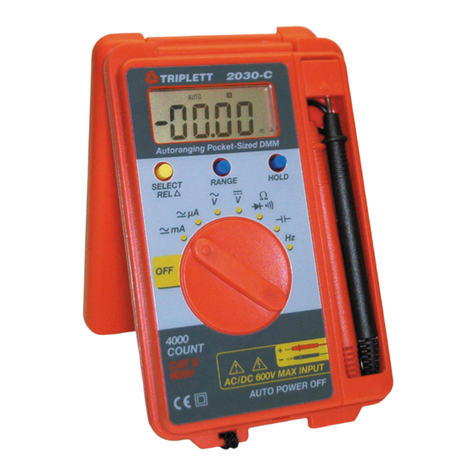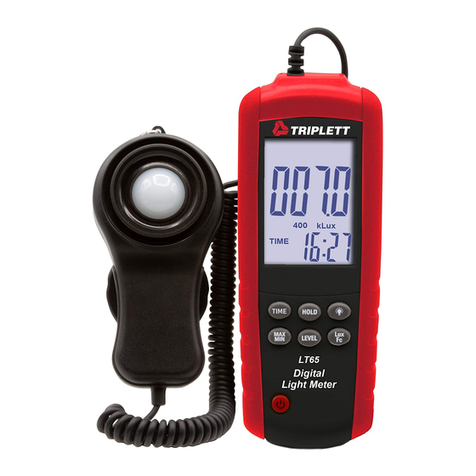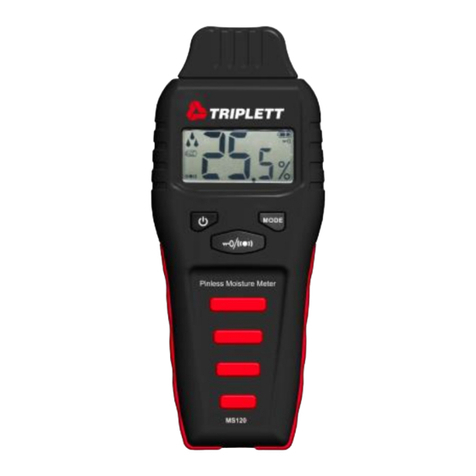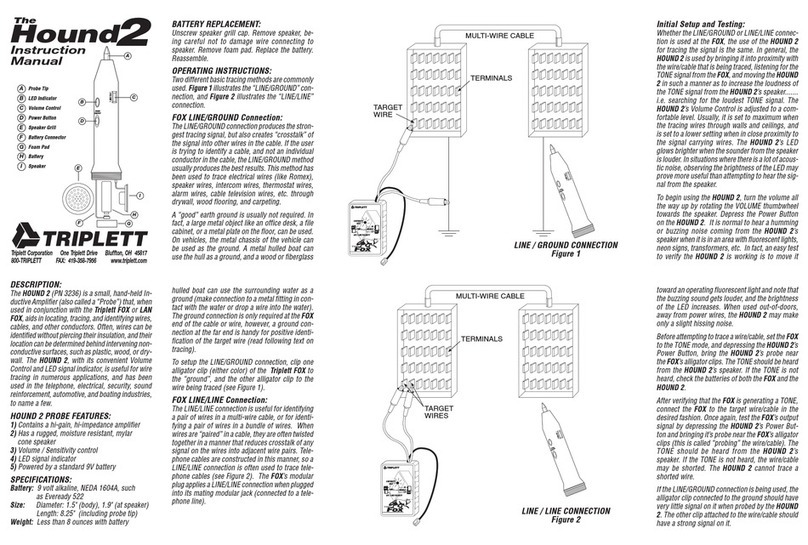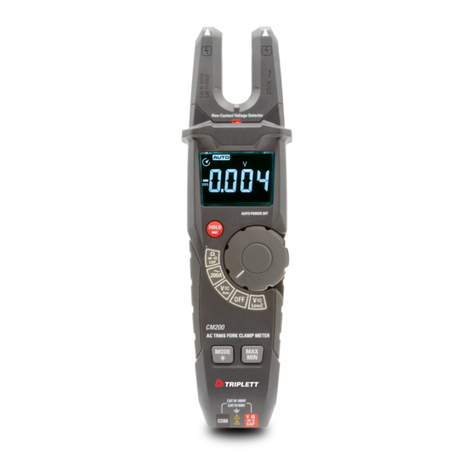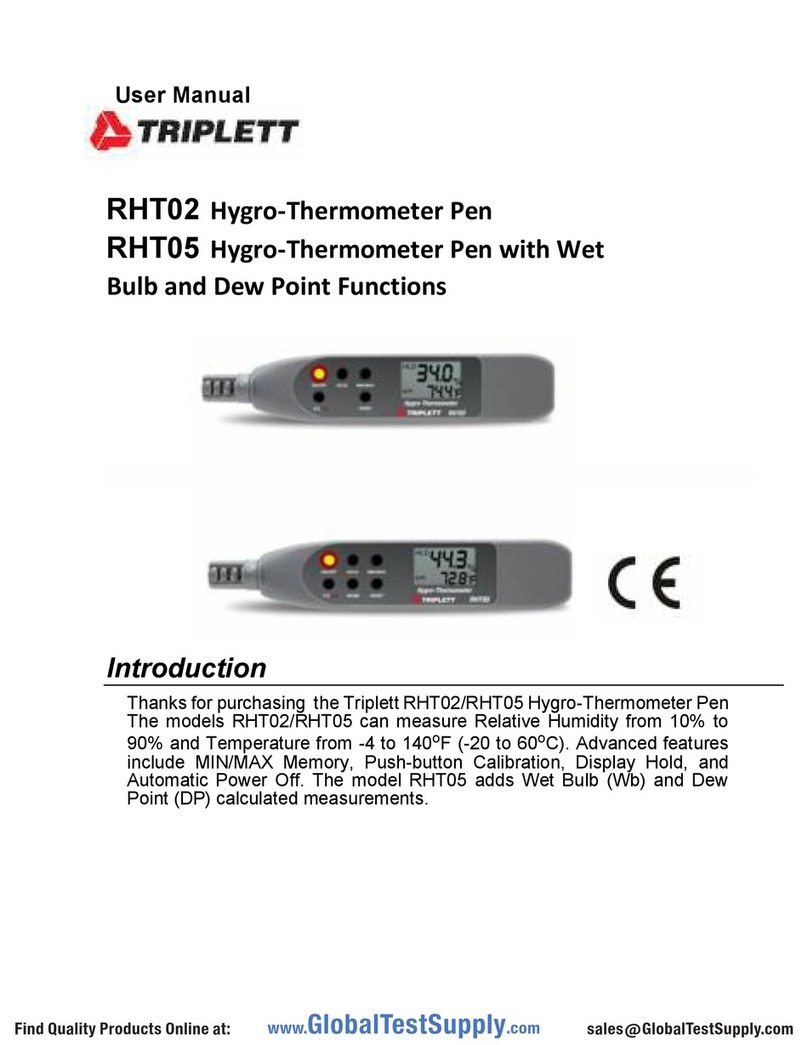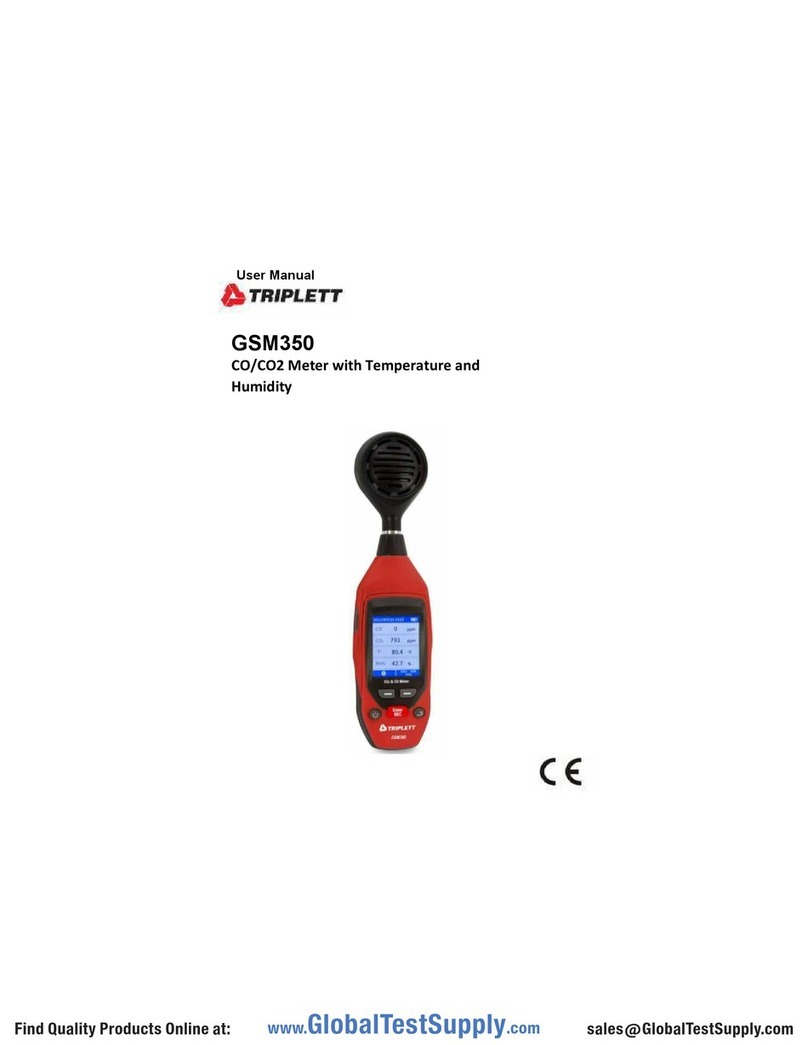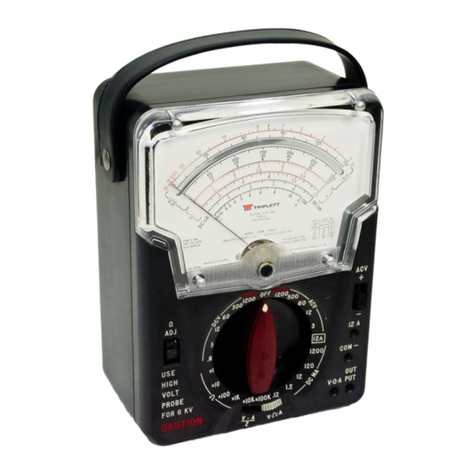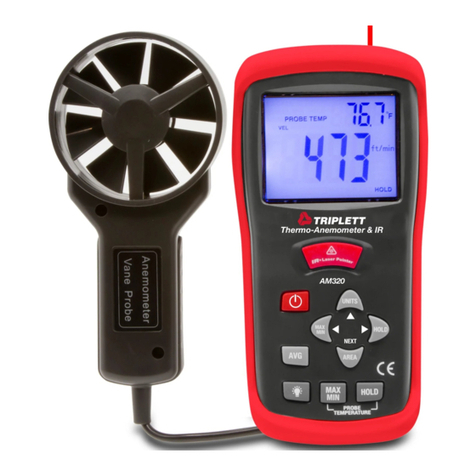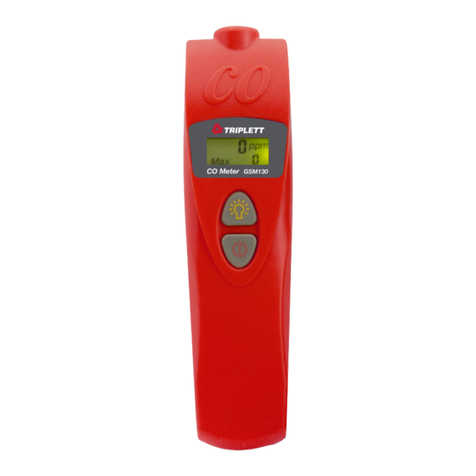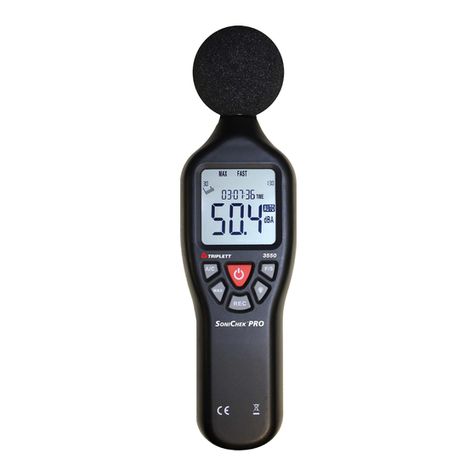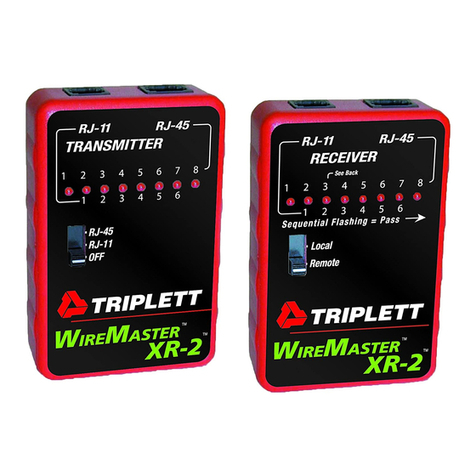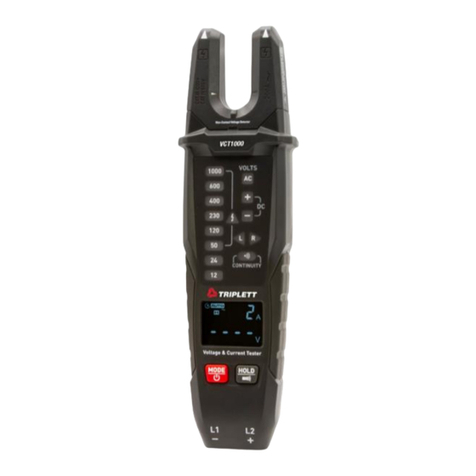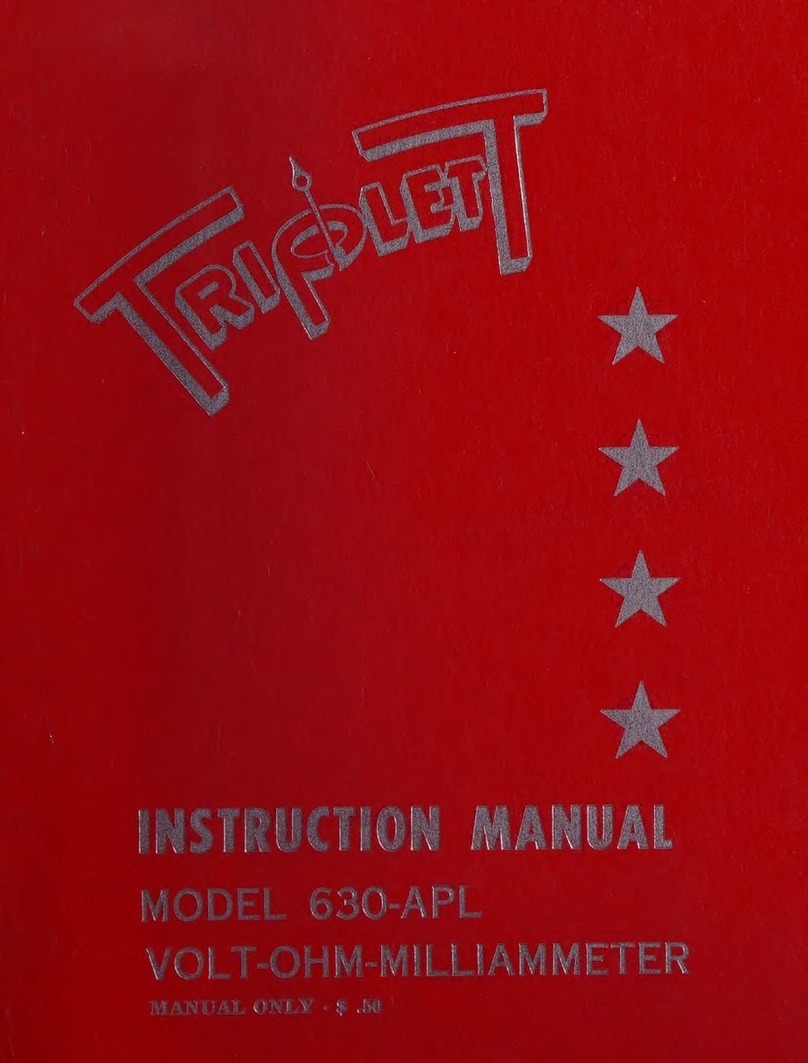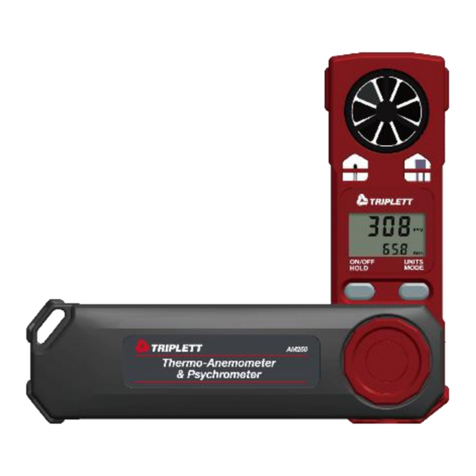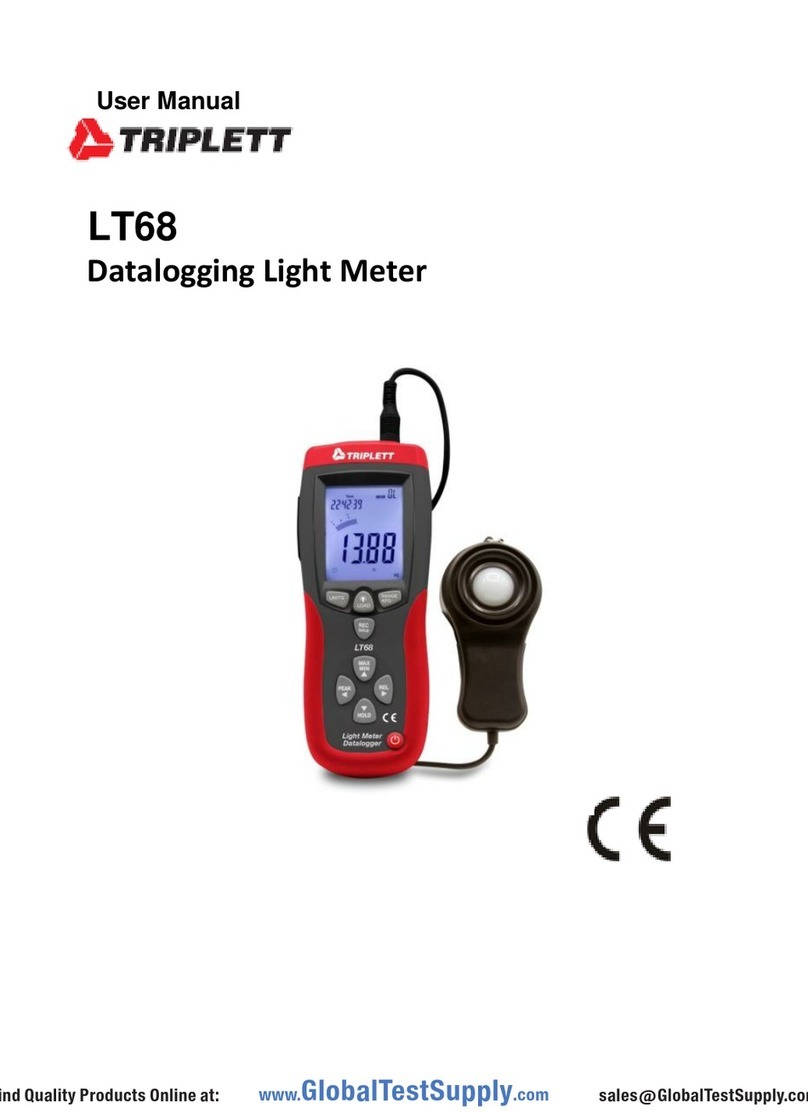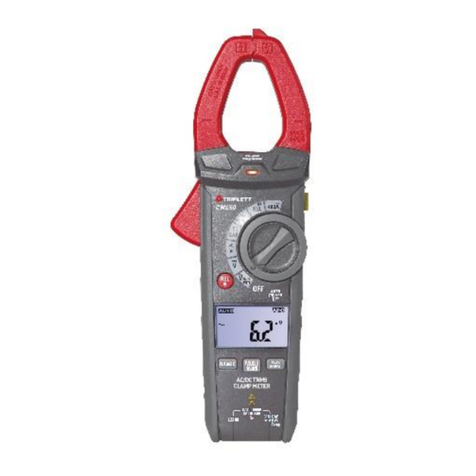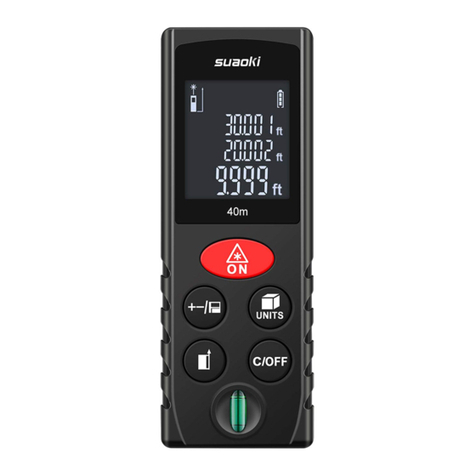
www.SteamPoweredRadio.Com
2
FOREWORD
With your
purchase
of
a Model
630-PL
Volt-Ohm-Milliammeler, you
have
made
a worthwhile investment, not only in a fine instrument,
but
backed
up
by
a company which
has
been
making instruments for more
than
hall
a century. The Triplett Company stands behind your
630-PL
and
will
give
all possible
assistance
in its use
and
maintenance.
TRIPLETT
WARRANTY
AND
CONDITIONS
OF
SALE
The Triplett Electrical Instrument Company
warrants
instruments manufactured by
ii
lo
be
free from defective material or factory workmanship
and
agrees
to repair
or replace such instruments which
under
normal
use
and
service, disclose the
defect lo
be
the fault
of
our
manufacturing. Our obligation
under
this warranty is
limited to repairing or replacing
any
instrument or test equipment which proves to
be
defective, when returned to
us
transportation prepaid, within ninety
(90)
days
lrom the
date
of
otiginal purchase.
This
warranty
does not
apply
to
any
ol
our
products which
have
been
repaired
or
altered by unauthorized persons or service stations in
any
way
so
as,
in
our
judgment, to injure their stability or reliability or which
have
been
subject to misuse,
negligence or accident or which
have
had
the serial
number
altered, effaced, or
removed. Neither does this
warranty
apply
to
any
of
our
products which
have
been
connected, installed, or
adjusted
otherwise
than
in
accordance
with the instructions
lumished by us. Accessories including all vacuum tubes
and
batteries not
of
our
manulacture
used
with this product
are
not covered by this warranty.
· The Triplett Electrical Instrument Company reserves the right to discontinue models
al
any
time, or
change
specifications or design, w.ithout notice
and
without incurring
any
obligation.
Upon acceptance
of
the material covered by this invoice the
purchaser
agrees
to
assume all liability
for
any
damages
and
bodily injury which may result from the
use
or misuse
of
the material
by
the
purchaser, his employees, or others,
and
that
The Triplett Electrical Instrument Company shall
incur
no liability
for
direct or
consequential
damage
of
any
k
in
d.
Parts will
be
made
available
for a maximum period
of
five
(5)
years
after
the
manufacture
of
this equipment
has
been
discontinued. Parts include all materials,
charts, instructions, diagrams, accessories, et cetera, whic~
were
furnished in the
standard
or special models.
This warranty
and
conditicns
of
sale
are
in lieu
of
all others expressed or implied
and
no representative
or
person is authorized to assume for us
any
other liability
in co-:.:1ection with the
sale
ol
our
products.
The
Tr
iplett Electrical Instrument
Company
Bluffton, Ohio
Printed
in
Part
o.
84-89-011764-15
(For
abov erial
o.
29,5
00
and
after
April
30,
1963)
TABLE
OF CONTENTS 3
Page
Familiarization . . . . . . . . . . . . . . . . . . . . . . . . . . . .
..........
•• • 4
Operation
Measuring
DC
Volts . . . . . .. . . . . . . . . .. . . . . . . . . . . . . . . . . 6
Measuring
AC
Volts
.................
........
..
......
8
Measuring
DC
Resistance
...
.........................
10
Measuring
DC
Current .
....
.
......
...............
.
...
12
Measuring Output Volts
(DB)
........................
14
Operation Chart
...............
.
...
.
.............
...
.
16
Measuring Capacity
..........
..
........
.
..
........
.
..
18
Additional Measurements
Measuring Kilovolts
...
. .
...
..
...
.
......
...
......
.....
20
Measuring High
DC
Current
.......
...........
.
.......
21
Accessories . . . . . . . . . .. . . . . . . . . . . . . . . . . . . . . . . . . . . . ••••• •
21
Additional Applications
....
..
..........................
22
Maintenance
......
.
....
.....
........
..
......
..
...
•••••
25
Interior View-Parts Location
.................
..
....
...
26
Replaceable Parts
....
...
...........................
•• .
27
Circuit Diagram
.....
.....
.
...
....
.............
....
. •. •
28
Data
DB
Chart
........
...
..........
......................
29
EIA
Condenser Color Code
....
.
...
......
..
...........
30
EIA
Resistor
and
Speaker Color Code
..........
......
.
31
EIA
Wiring Color Code .
...
..
.....
...
......
.
......
....
31
EIA
Transformer Color Code
..
.
.................
..
...
32


